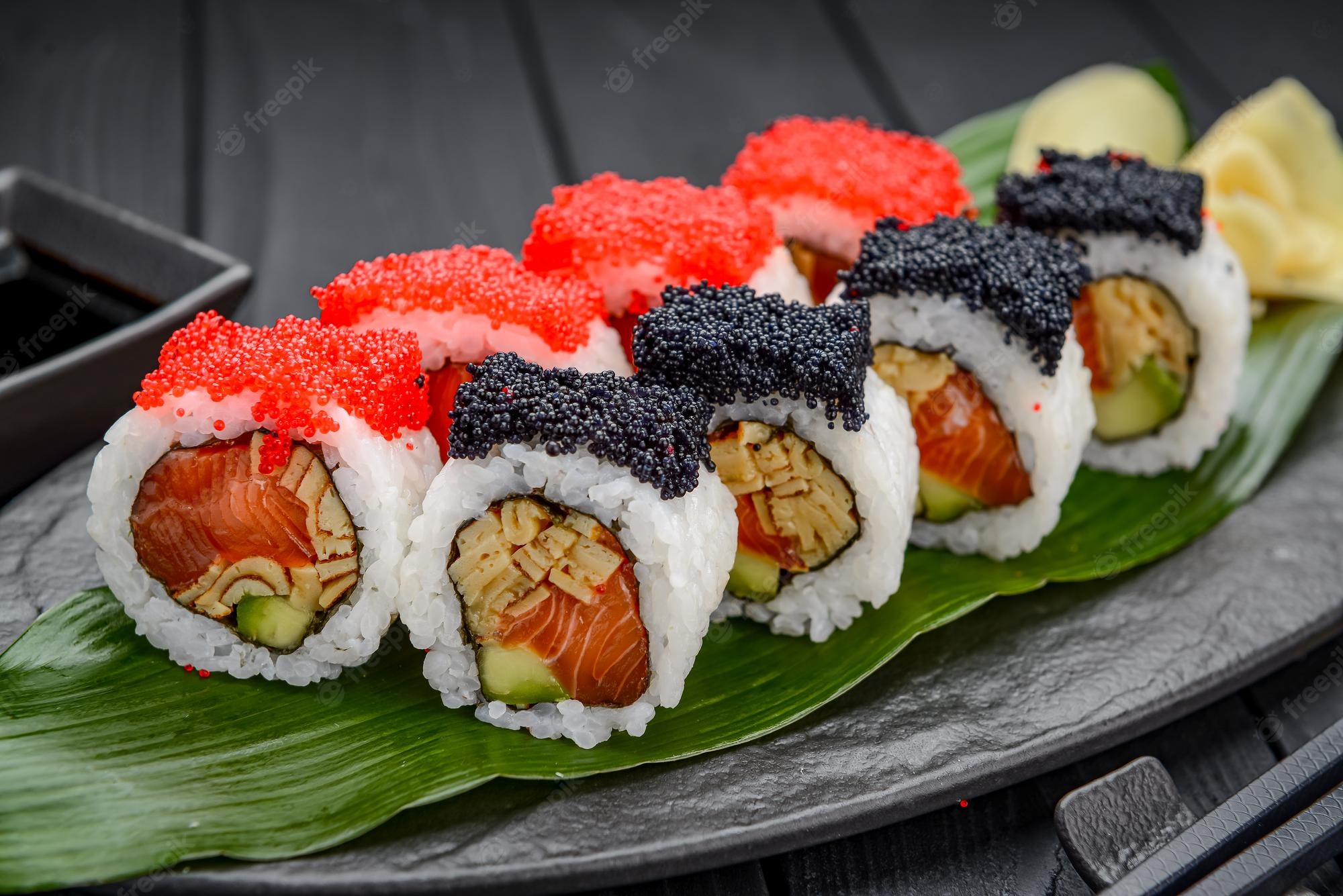What is tobiko?
Tobiko is the Japanese term for ‘flying fish roe’ – small fish eggs that are between 0.5 and 0.8 mm.
Natural tobiko has a red-orange colour, a mild smoky or salty taste, and a crunchy texture. However, Tobiko is sometimes coloured to change its appearance, such as squid ink to make it black, yuzu to make it pale orange, or even wasabi to make it green and spicy.
How is tobiko used in sushi?
Tobiko is commonly used as a topping for sushi dishes such as California rolls, to add more flavour and make them look more attractive. The garnish is also commonly used in raw Japanese dishes to add a salty, smokiness to them.
Is tobiko the same as masago?
Masago and tobiko are quite similar but they’re not the same. Masago is smaller and less expensive than tobiko, which is why it’s used as a popular substitute for tobiko in sushi rolls. While they taste quite similar, Masago is less crunchy than tobiko and is slightly duller in appearance. Tobiko and Masago are from different kinds of fish: Tobiko is flying fish roe, while Masago is the roe of smelt.
Is tobiko the same as caviar?
Tobiko and caviar are not the same thing. They look a little similar in both colour and size, but tobiko is saltier and yet much sweeter than caviar. Tobiko can be made from any fish roe whereas caviar is specifically made from fish eggs of a sturgeon.
Is tobiko good for you?
Tobiko is rich in protein, omega-3 fatty acids and other nutrients. These fatty acids help to reduce inflammation and help our brain to function better. It’s also said to have immune-boosting qualities! Tobiko is very high in cholesterol but as the serving size is usually extremely small it shouldn’t present a health issue.
Here’ at Bradley’s we have a great selection of Tobiko for you to try with your sushi!


